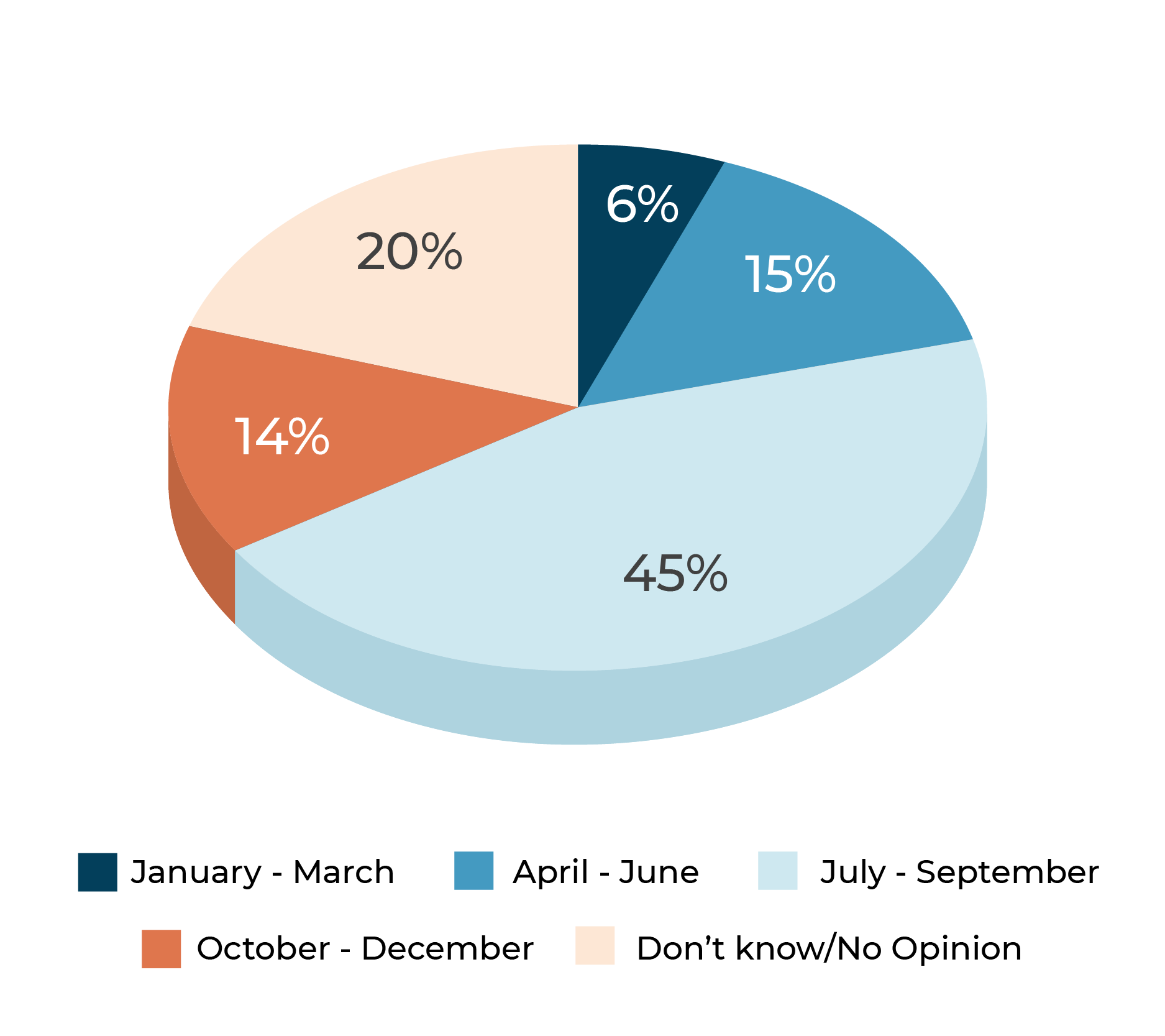College Bound
The leaving for college occasion is a difficult one to pin down, not because what the student needs necessarily changes, as the basic list of necessities is well established, but because it isn’t a single date. Instead, leaving for college is a period of time that, for some, occurs around high school graduation, but for others, it occurs as time nears for the departure to school.

Maximizing the opportunity can be a matter of making it convenient for givers to give when they want and how they want. Already, retailers have created the means for consumers to conveniently shop for the student of their choice, but commanding consumer attention across the weeks between graduation and moving into college isn’t an easy proposition.
About 15% of respondents to the Occasions Survey were somewhat likely to be part of the leaving for college process among family or friends over the next year, down three points from the 2023 survey, while 10% foresaw the possibility in their own lives, down one point year over year. Still, 17% of respondents said they thought they might be in the market for a home and housewares gift for a student leaving for college, which suggests that folks more distant from the occasions, perhaps long acquaintances and others not directly involved but friendly to the new collegian might want to contribute a gift. In 2023, the number was a bit higher at 19%.
Bedroom products were the top home and housewares categories for leaving for college presents, at 45%, followed by organization or home décor products at 40% and bathroom products at 38%. 45% of respondents would buy a gift card.
By gender, men favored kitchen products more than women, at 29% to 25%, while the genders were tied at 38% regarding bathroom or personal care products. Women were more likely to pick bedroom products at 48% than men at 42%, but men were more likely to pick a cleaning or home environment product at 34% to 27%. When it comes to organization or home décor products, 44% of women leaned toward them vs. 37% of men. Of the 45% of respondents who would purchase a gift card for the occasion, 47% were women and 42% were men.
As expected, 45% of leaving-for-college gift-givers said the most likely time frame for buying a present is July to September, but 15% said April to June and 14% from October to December.
By educational grouping, and not too surprisingly, post-graduate degree holders lead with a 20% likelihood of being involved with a family or friend heading off to college occasion vs. 15% of those with a bachelor’s degree and 12% of those who didn’t attend college.


When it comes to being involved in a family or friend leaving for college occasion, survey respondents 35-44 lead at a 20% likelihood, just ahead of 18–34-year-olds at 19%.
For your friends and family, how likely is it, if at all, that leaving for college will take place at least once in the next 12 months?

For yourself, how likely is it, if at all, that leaving for college will take place at least once in the next 12 months?

The leaving for college occasion is a difficult one to pin down, not because what the student needs necessarily changes, as the basic list of necessities is well established, but because it isn’t a single date. Instead, leaving for college is a period of time that, for some, occurs around high school graduation, but for others, it occurs as time nears for the departure to school.
Urban respondents, at 16%, just topped suburban consumers, at 15%, in potential involvement in the leaving for college occasion, with rural consumers not far behind at 13%.

What general product categories of home and housewares gifts would you be likely to purchase for leaving for college? (Select all that apply)

Respondents with households earning more than $100,000 a year were most likely to look forward to a leaving for college occasion at 24%, followed by consumers with a household income of $50,000 to $100,000 at 15%, and consumers with a household income under $50,000 at 12%.
Consistent with some research that suggests more older people are seeking post-secondary education, 18% of 35-44-year-old respondents were most likely to leave for college in the year forward versus 17% of 18 to 30-year-olds.
In the next 12 months, how likely is it, if at all, that you will purchase a home and housewares gift for leaving for college?

In general, what time of year would you say you are most likely to purchase home and housewares gifts for leaving for college?

For themselves, 15% of respondents who were looking ahead to a leaving for college occasion came from affluent households, while 10% of middle- and lower-income respondents were in the same state of anticipation.


In residency terms, 13% of urban, 10% of suburban and 8% of rural respondents were looking at leaving for college events.

Final Thoughts
Gift-givers for the leaving for college occasion tend to secure their home and housewares gifts in the summer. Still, a substantial proportion do so before and after the most common timeframe, which may complicate getting an item to the student. Not all gift-givers, mainly if they are geographically distant, will be at the occasions when most presents will be given. As such, online retailers such as Amazon have made it so that consumers can purchase and ship to wherever the student lives. However, that creates a timing issue, as the student already must be situated to receive it. Therefore, retailers with online operations and stores in college communities can find a more convenient solution in ship-to-store operations.
Some retailers with digital operations and many locations, including Target and Walmart, have year-round college assortments that can be searched online and the ability to receive a gift near where the student is living to be picked up when ready. The store pickup option can be attractive with an occasion not focused on a single day. Amazon also has pickup locations, but while students are likely to know that, gift-givers might not and can turn to stores where they typically use pickup themselves. Promoting pickup in all college-related engagements could be a good idea in such circumstances. When that isn’t in the cards, the establishment and promotion of other means of connecting gifts and students may be worth consideration.

